
Cricket is a competitive sport where a team has to take ten wickets to bundle out the opposition.
It is believed that a team cannot win a test match if its bowlers are unable to pick all twenty scalps. Getting a batsman out not just helps control the scoreboard, but basically decides the course of the game.
There are ten ways to get a batsman out in cricket, with the most common forms of dismissal being bowled, caught, leg before wicket (lbw), run-out and being stumped. There are a few rare types as well, which include hit-wicket and obstructing the field. However, in the case of the latter, the umpire can't say a batsman out unless the fielding team appeals.
Len Hutton, Desmond Haynes, Steve Waugh are the players who have been dismissed by seven different ways in their careers.
Let's have a look at eleven modes of dismissal in cricket-
#1 Bowled
A batsman is adjudged out if the delivery bowled by bowler hits the stumps/bail behind him, and at least one bail is dislodged permanently off the wickets.
The batsman won't be regarded as bowled if the ball is not legitimate, like a no-ball. If the ball is touched by the umpire or wicket-keeper before the ball hits the stump, the batsman may not be given out.
The batsman won't be given out if both bails stay on the top of stumps despite the ball hitting the wicket. However, the batsman may be given out if the stump is struck off the ground and somehow bails remain on the top.
#2 Caught

Being caught out is the most common mode of dismissal for the batsman. There are three sub-categories of being caught out.
i). Caught Behind
This is when a legitimate delivery by bowler hits at least one of the bat or gloves of the batsman and is caught by the wicket-keeper without touching the ground.
ii). Caught & Bowled
When the bowler catches the ball after it is hit by the bat and/or gloves of the batsman, it is a caught-and-bowled dismissal. These catches are difficult, more so since they are held on to by the bowler in his/her the follow through.
iii). Caught by fielder
The rules are similar to caught-and-bowled, except that the fielder taking the catch is not bowling at the time.
#3 Stumped
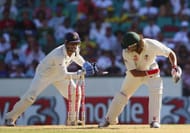
If batsman steps out leaving no part of his bat or body behind the crease and the wicket-keeper dislodges the bails, he/she is termed out. In case the keeper dislodges the bail before the ball reaches him/her, the batsman will not be given out.
Stumped is the only form of dismissal which goes to bowler's tally even when the delivery is not legitimate.
#4 Leg before wicket (LBW)
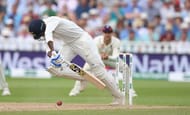
A batsman can be given out LBW if the ball hits his/her body or any sports equipment other than the bat or gloves, and the ball was assumed to hit the stumps.
For the batsman to be out, the ball should have an impact outside the off-stump and by judging its bounce, spin or swing, it should have gone hit the stumps if not for the interception.
The batsman won't be given out if the ball hits bat or glove before touching the body or if the ball is pitched outside leg-stump. However, the batsman can be given out if the ball is outside off-stump and the batsman doesn't offer a shot.
#5 Run-Out
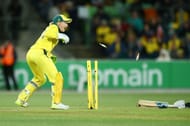
If the fielder dislodges the bails while either of the batsmen fails to make his/her ground while running between the wickets, the batsman is regarded run-out.
The batsmen must have something behind the line to be safe unless they are on the same side, in that case, the batsman further away from the stumps adjudged run-out.
It is mandatory for a fielder to touch the ball before it hits the wicket for the run-out to be legitimate. If the striker hits the ball and it strikes the stumps on the other end while the non-striker is out of the crease, it will be marked run-out only if the bowler has touched the ball before it hits the wicket.
#6 Hit-wicket
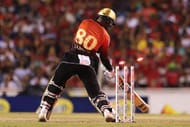
If a batsman dislodges the stumps with his body or any sports equipment while attempting to play a shot or beginning his run, he is deemed hit-wicket.
The batsman won't be given out if he blazed into the stumps to avoid a run-out. A famous hit-wicket incident occurred in a Test match in Headingley, when a bouncer by Dwayne Bravo hit the helmet of Kevin Pietersen and the helmet fell on the stumps, KP had to go back to the pavilion.
#7 Obstructing the field

If a batter consciously obstructs the play by his/her words or action, he/she may be given out under the law 37 of obstructing the field. A batsman knowingly running in such a way that it prevents the ball from hitting stumps can be given out by the umpire on appeal from fielding team.
After the amendments of laws of cricket in 2017, all the offences under the handling of the ball fell under this law. If a batsman touches the ball with the hand, not in contact with the bat for any purpose other than to protect himself from any injury or to return the ball to the fielder, the batter is found guilty of this charge.
#8 Retired out
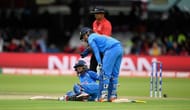
A batsman is considered retired out if he leaves the field without the prior acquiescence of umpire apart from any injury and fails to resume the innings.
The batsman can resume the innings only with consent from fielding team skipper. Also, if a batsman who is retired hurt fails to return to the crease during the play, is not deemed retired out when calculating his batting average. Only two batsmen have been given out retired hurt in international cricket – Mahela Jayawardhane and Marvan Atapattu, Interestingly, it was in the same innings against Bangladesh in 2001.
#9 Hit the ball twice

If a batsman hits the ball twice, he is given out under the law.34. The first touch is when the ball strikes the bat. The second touch has to be deliberate and not necessarily with the bat, but the body of the batsman as well.
The batter can stop the ball from hitting the stumps by his/her body and bat but not with his hands. No batsman has been given out till date pursuant to this rule.
#10 Timed Out

This is one of the rarest modes of dismissal in cricket. If a batsman fails to arrive at the crease within a certain time limit, he is given out by the umpire on an appeal from opposition team.
The time limit is three minutes for ODI and Test cricket and two minutes for T20Is. Also, if a batsman doesn't resume his play after a break, he can be timed out as well. An incident took place in a test match between India and South Africa where Sourav Ganguly took nearly five minutes to arrive at the crease, but the Proteas didn't appeal and hence, Ganguly was allowed to carry on.
Follow IPL Auction 2025 Live Updates, News & Biddings at Sportskeeda. Get the fastest updates on Mega-Auction and cricket news
